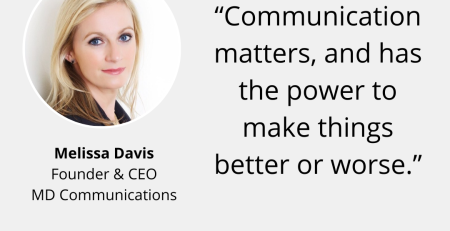Michael Gove, during last year’s EU referendum campaign, famously declared that people had had enough of “experts”. He had in mind the economists, scientists, lawyers and vice chancellors who thought Brexit was a terrible idea.
Well, for now at least he’s back in government, and at a time when a different sort of expert has an uncomfortable spotlight on them. I’m talking about the pollsters, public relations advisers and campaign strategists whose judgements led prime minister Theresa May to call an election in the mistaken belief that she was due a landslide victory.
I’ll let the pollsters fight their own corner on this one – let’s look at “PR” in the election and the chaos since.
There’s a version of events doing the rounds that the Conservatives had the superannuated comms machine, but were faced down by a rag-tag guerrilla army who wanted nothing more than to end poverty, save the NHS and have a selfie with Jeremy Corbyn. (I’m simplifying, but you get the gist.)
Corbyn and the rag-tags bypassed a biased media to talk direct to the people – through rallies, tweets, websites like the Canary, Facebook updates and Daily Mirror comment pieces.
And that’s what happened. Isn’t it?
I don’t want to underestimate the sheer amount that was thrown at Corbyn and Labour in this election – whatever your politics, there’s a resilience there to acknowledge.
What’s interesting to note, for these purposes, is that Labour in this election campaign was pretty good at PR. On some key points, they were much better than the Conservatives.
Here, in no particular order, are a few thoughts on why:
Labour had a core message: this was on anti-austerity and the NHS. Labour stuck to this. The Conservative decision to muddle Brexit with character assassination – while fighting a rear-guard action on criticism of a campaign that saw little real exposure to the electorate – was too nuanced as an offering, even when it was eye-catchingly rude. With the London Bridge and Manchester attacks, the Conservative message was also out of kilter with a sad and sombre public mood when public services, like police and medics, were at the forefront of events. The Conservatives were slow to adapt to events.
Labour managed a defining image: an image with no-one in it… Theresa May the no-show PM. Corbyn’s surprise announcement that he’d go to a leaders’ debate utterly wrongfooted the PM. The defining image of the campaign could have been Corbyn forgetting his numbers on Woman’s Hour – but the debate move was simpler, and had the advantage of doing all the damage before the event even began.
Corbyn had an unspun image: if you follow politics, you’ll know that achieving “unspun” and “authentic” is the holy grail for politicians seeking election. It can lead to some very undignified moments – think Zac Goldsmith failing to hold a pint of beer properly, or Hilary Clinton feeling the need to insist “I’m just a mom”. Corbyn could draw on decades of almost-deliberately bad, scruffy dress, while opponents tried to pretend they were regular people who don’t spend £500-£2000 on a suit by taking off the suit jacket.
Social media and “non-media”: there was an interesting moment on the news earlier this week – an interview conducted from a Momentum office. Remember, Momentum are the ‘grassroots’ organisation that supports Jeremy’s leadership. It could have been a room in Saatchi & Saatchi – cool people at slick lines of computers, helping to push out an agreed message. Of course, what they are doing needs to be good enough for ‘ordinary’ people to want to pick up, believe and share. But still, the sight was revealing on this “unspun” operation.
What do I mean by “non-media”. The Canary website comes to mind. Journalist friends sniff that the Canary is not written by journalists and has no commitment to independence – that it’s partial and unreliable.
Well yes, all that. But did you see the Daily Mail and the Sun during the campaign? There was clearly a space for a left-wing equivalent. This was intensely useful – and in the age of Buzzfeed, HuffPost and The Daily Mash, it proved as important as getting the Daily Express on board. These days, your self-published content can matter.
What now?
What indeed? All parties are scrambling to get their message out. The need for a good line that people can stick to hasn’t changed – and neither has the need, in PR terms, to repeat it till you’re tired of it. That’s when the message is just about getting through.
If you want to see a couple of PR stars at work, go north of the border. Watch SNP leader Nicola Sturgeon – tirelessly pointing out that the SNP “won” in Scotland, despite losses. Or Scottish Conservatives leader Ruth Davidson – who was great on the stump during the election, and immediately after grabbed the headlines when seeking reassurance on gay rights in the context of a DUP “deal”.
These people – and the people in the Momentum spin-centre – are the new “experts” in communications. Perhaps they know what’s always been true – but that some people have forgotten – that communication is a two-way thing.
If you need some expert advice on communications, I hope you’ll get in touch.












